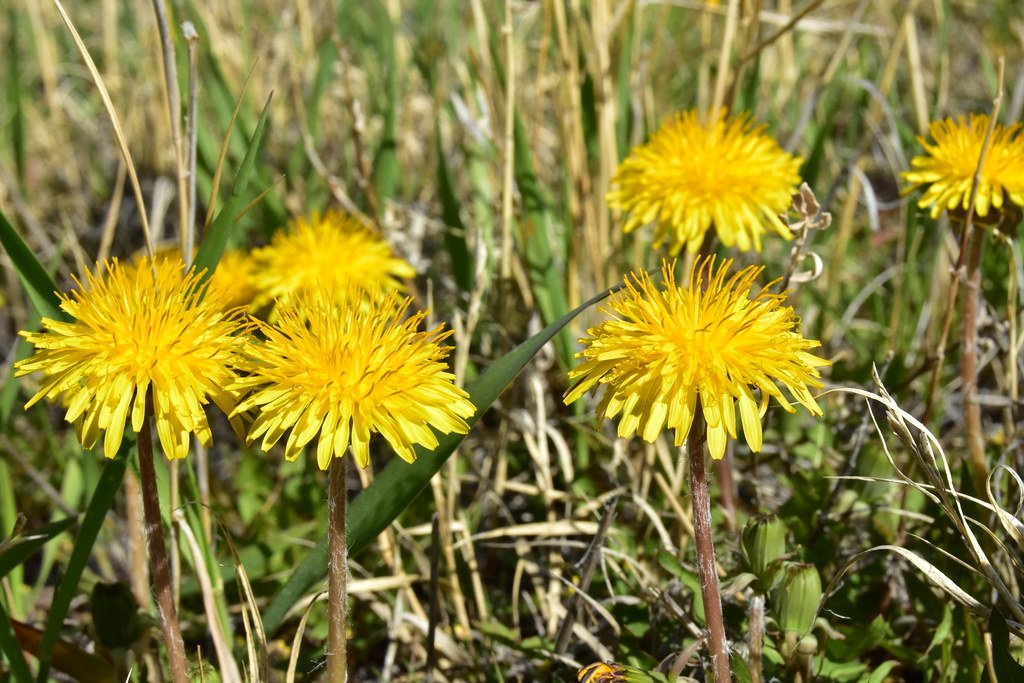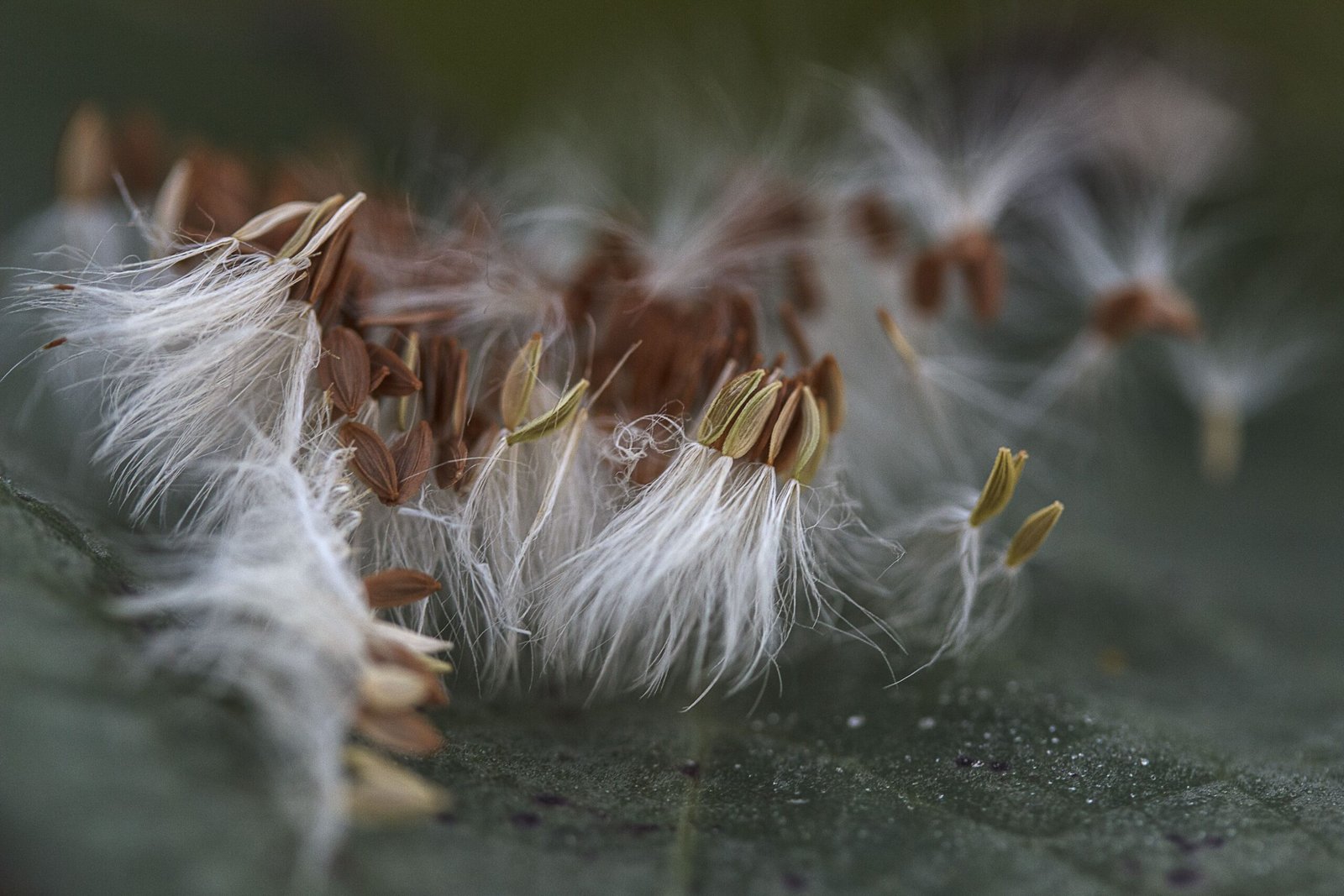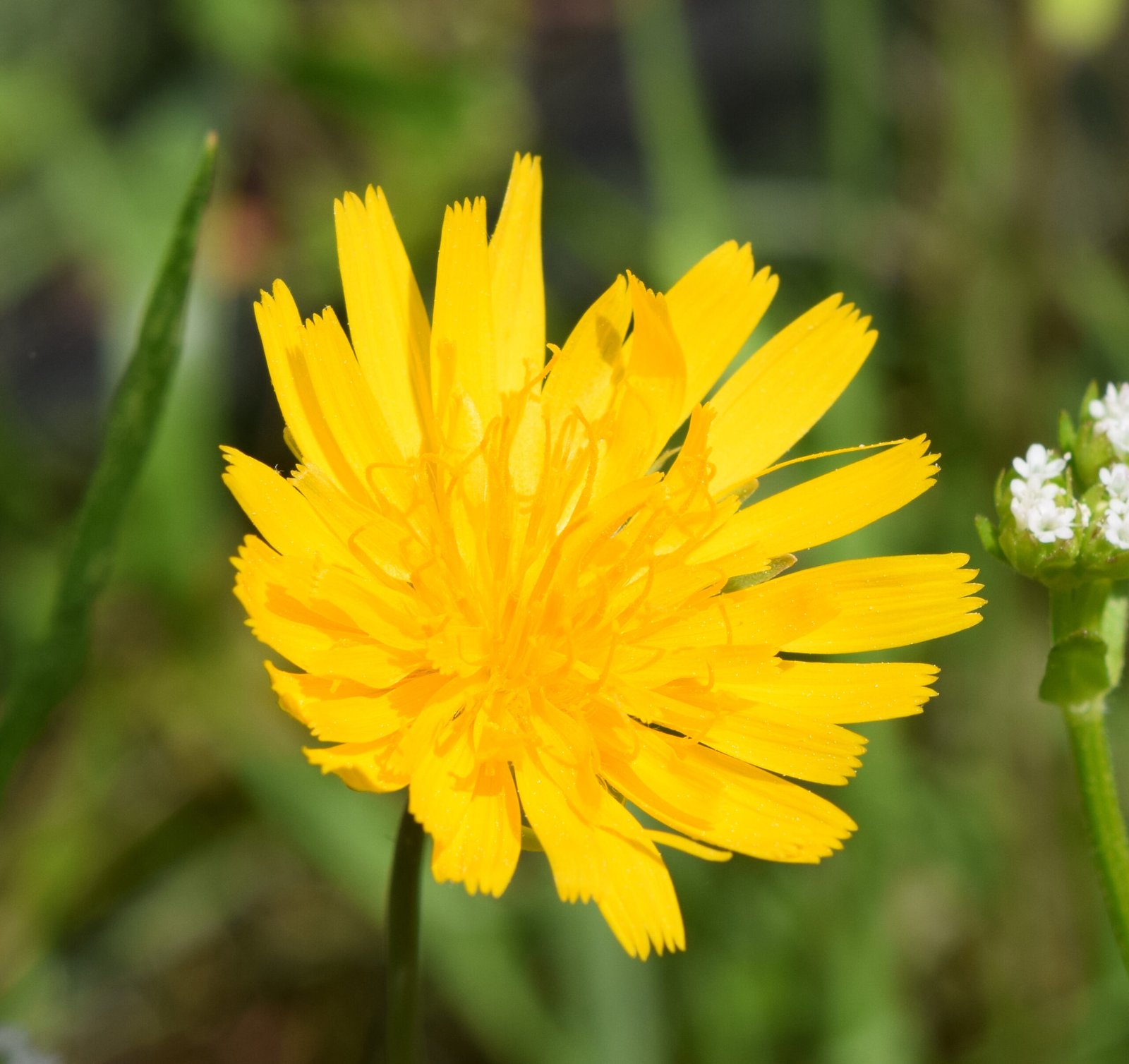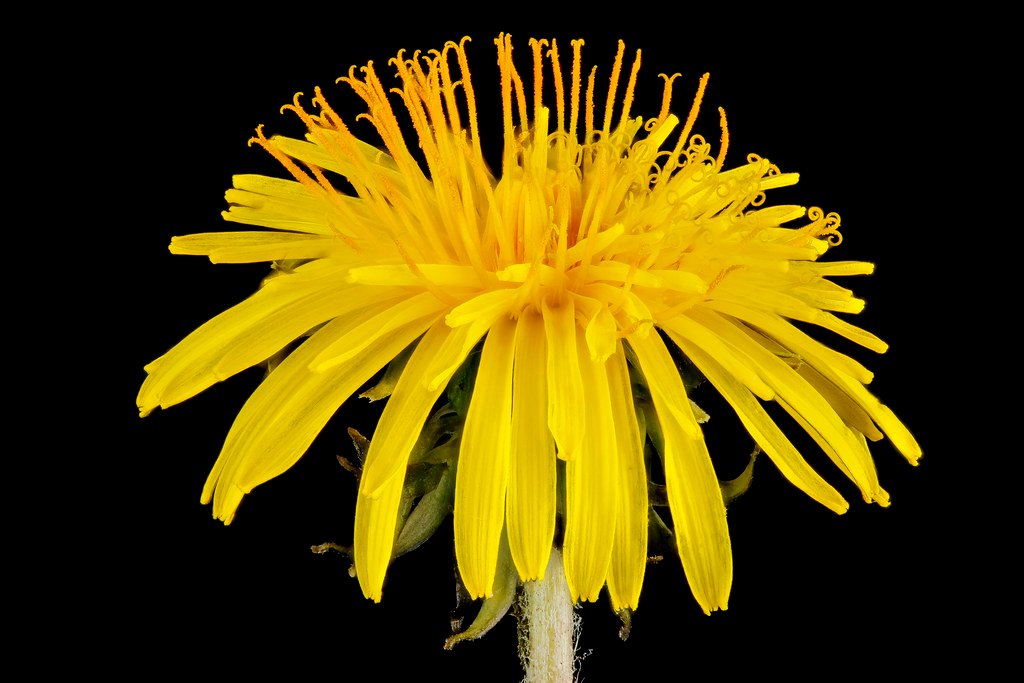Picture this: your neighbor spends their entire Saturday battling yellow invaders with chemicals and curse words, while you’re sitting on your porch, watching the same “weeds” feed a parade of insects and knowing something they don’t. Those bright yellow flowers carpeting your lawn aren’t the enemy – they’re actually environmental superheroes disguised as common weeds. Most people see dandelions as public enemy number one in the quest for the perfect green lawn, but science tells a completely different story that might just change how you look at these remarkable plants forever.
The Shocking Truth About Dandelion Nutrition

Dandelions pack more nutritional punch than most vegetables sitting in your refrigerator right now. These yellow-flowered plants contain higher levels of vitamin A than carrots, more vitamin C than oranges, and more iron than spinach.
The leaves are loaded with potassium, calcium, and antioxidants that can rival expensive superfoods. Every part of the dandelion plant is edible, from the bitter leaves that make excellent salad greens to the roots that can be roasted and ground into a coffee substitute.
Throughout history, humans have relied on dandelions as both food and medicine, with some cultures considering them more valuable than gold. The plant’s scientific name, Taraxacum officinale, literally means “official remedy for disorders,” highlighting its medicinal importance across civilizations.
Early Season Lifesavers for Pollinators

When most flowers are still sleeping underground, dandelions emerge as the first responders of the pollinator world. These hardy plants start blooming in early spring when bees are desperately hungry after months of winter survival.
Native bees, honeybees, and other pollinators depend on dandelions for crucial early-season nectar and pollen. Without these yellow lifelines, many pollinator populations would struggle to rebuild their colonies after the harsh winter months.
A single dandelion flower can provide food for up to 93 different species of insects, making them tiny restaurants in your backyard ecosystem. The timing of dandelion blooms perfectly matches the emergence of many native bee species, creating a synchronized dance of survival that has existed for thousands of years.
The Underground Empire You Never Knew Existed

Beneath every dandelion lies a remarkable root system that can extend up to 15 feet deep into the soil. These powerful taproots act like natural soil aerators, creating channels that allow water and nutrients to penetrate deeper into the earth.
The extensive root network breaks up compacted soil better than any expensive lawn equipment. As the roots decompose, they leave behind organic matter that enriches the soil for other plants to thrive.
This underground empire also helps prevent soil erosion on slopes and hillsides where other plants might struggle to establish. The deep roots access nutrients and minerals from soil layers that shallow-rooted plants can never reach, bringing these essential elements closer to the surface for other plants to use.
Nature’s Pharmacy Growing in Your Yard

Traditional medicine has used dandelions for centuries to treat everything from liver problems to skin conditions. Modern research is beginning to validate many of these traditional uses, revealing compounds in dandelions that support liver function and digestive health.
The plant contains natural diuretics that help the body eliminate excess water and toxins. Dandelion tea made from the leaves has been used to reduce inflammation and support kidney function in various cultures around the world.
Recent studies have identified antioxidants in dandelions that may help protect against cell damage and support immune system function. The bitter compounds in dandelion leaves stimulate digestive enzymes, potentially improving digestion and nutrient absorption.
The Perfect Pollinator Calendar

Dandelions don’t just bloom once and disappear – they provide multiple waves of flowers throughout the growing season. This extended blooming period creates a reliable food source for pollinators from early spring through late fall.
While other wildflowers have specific blooming windows, dandelions adapt their flowering schedule to environmental conditions. This flexibility ensures that pollinators always have access to nectar and pollen when they need it most.
The flowers open in the morning and close in the evening, following the same schedule as many pollinator species. This synchronized timing maximizes the efficiency of pollination and ensures that both the plants and their visitors get the most benefit from their relationship.
Soil Health Champions

Dandelions are master soil engineers, constantly working to improve the health of the earth around them. Their deep taproots bring up nutrients from deep soil layers, effectively mining minerals that other plants cannot access.
When dandelion leaves fall and decompose, they release these deep-soil nutrients at the surface level. This natural fertilization process enriches the topsoil and creates better growing conditions for surrounding plants.
The plants also produce compounds that can help break down heavy metals and other soil contaminants. Some researchers are studying dandelions as potential tools for bioremediation – using plants to clean up polluted soil naturally.
The Hidden World of Dandelion Biodiversity

What looks like a simple yellow flower is actually a complex ecosystem supporting an incredible diversity of life. Over 400 species of insects have been documented visiting dandelion flowers, including many rare and endangered species.
The seeds provide food for more than 30 species of birds, from tiny goldfinches to larger gamebirds. Small mammals like chipmunks and rabbits also depend on dandelion seeds and leaves as important food sources.
Even the hollow stems serve a purpose, providing nesting sites for small insects and spiders. This multi-layered ecosystem support makes dandelions keystone species – plants that have a disproportionately large impact on their environment relative to their abundance.
Climate Change Adaptation Experts

Dandelions are incredibly resilient plants that can adapt to changing environmental conditions better than most other species. As climate change creates more extreme weather patterns, these hardy plants provide stability in uncertain times.
They can survive droughts, floods, temperature fluctuations, and even foot traffic that would kill most other plants. This resilience makes them valuable allies in maintaining ecosystem stability as environmental conditions become more unpredictable.
The plants also have a long growing season and can photosynthesize efficiently even in low-light conditions. This adaptability ensures that they can continue supporting pollinators and other wildlife even when other food sources become scarce due to climate-related stress.
The Economics of Dandelion Destruction

Americans spend billions of dollars annually on lawn care products designed to eliminate dandelions and other “weeds.” This massive industry relies on convincing homeowners that a monoculture grass lawn is more valuable than a diverse ecosystem.
The environmental cost of this war on dandelions includes pesticide runoff that pollutes waterways, soil degradation from chemical treatments, and the loss of biodiversity in suburban landscapes. Many of these chemicals also pose health risks to pets, children, and wildlife.
Meanwhile, dandelions provide free ecosystem services worth thousands of dollars per acre, including pollination support, soil improvement, and wildlife habitat. The economic value of these services far exceeds the cost of occasional lawn maintenance around these beneficial plants.
Dandelions vs. Lawn Monocultures

The perfect green lawn is essentially a biological desert – a monoculture that supports very little life beyond grass. In contrast, a lawn with dandelions becomes a thriving ecosystem that supports dozens of species.
Grass lawns require constant inputs of water, fertilizer, and pesticides to maintain their artificial appearance. Dandelions, on the other hand, improve soil health naturally and require no additional resources to thrive.
The aesthetic preference for grass-only lawns is a relatively recent cultural phenomenon that ignores the ecological benefits of plant diversity. Many progressive landscapers now promote “eco-lawns” that include dandelions and other beneficial plants as features rather than problems.
The Seed Dispersal Miracle

Those fluffy white seed heads that children love to blow aren’t just fun – they’re engineering marvels that have inspired human technology. Each seed is attached to a specialized structure called a pappus that acts like a tiny parachute.
The aerodynamic design of dandelion seeds allows them to travel up to 100 miles on air currents, making them incredibly effective at colonizing new areas. This dispersal mechanism has helped dandelions spread to every continent except Antarctica.
Engineers have studied dandelion seed design to improve drone technology and develop new methods for distributing seeds in reforestation projects. The mathematical precision of the seed structure continues to inspire innovations in aviation and materials science.
Traditional Cultures and Dandelion Wisdom

Indigenous peoples across North America have used dandelions for food and medicine for thousands of years. Many tribes considered dandelions sacred plants that provided sustenance during difficult times.
European cultures brought additional dandelion knowledge to the Americas, including techniques for making wines, teas, and preserved foods from the plants. The name “dandelion” itself comes from the French “dent de lion,” meaning “lion’s tooth,” referring to the plant’s jagged leaves.
Traditional ecological knowledge from these cultures emphasizes the interconnectedness of all living things, viewing dandelions as essential partners in maintaining healthy ecosystems. This holistic perspective stands in stark contrast to modern views that treat these plants as enemies to be eliminated.
The Science of Dandelion Resilience

Dandelions have evolved remarkable survival strategies that make them nearly indestructible. The plants can reproduce both sexually through seeds and asexually through root fragments, ensuring their survival even under extreme conditions.
Their leaves grow in a flat rosette pattern that maximizes sun exposure while minimizing water loss. The waxy coating on the leaves helps them retain moisture and resist damage from frost and herbicides.
The plants can even survive being mowed regularly by storing energy in their deep roots and quickly regenerating new growth. This ability to recover from disturbance makes them excellent pioneer species that can establish ecosystems in damaged or disturbed areas.
Dandelions as Indicator Species

The presence and health of dandelions can tell us important information about soil and environmental conditions. These plants thrive in healthy, well-balanced soils but struggle in heavily polluted or degraded environments.
Scientists use dandelions as biomonitors to assess air quality, soil contamination, and ecosystem health. Changes in dandelion populations can serve as early warning signs of environmental problems.
The plants are also sensitive to certain types of pollution, making them valuable tools for detecting contamination in urban and industrial areas. Their widespread distribution and easy identification make them ideal subjects for citizen science projects monitoring environmental health.
The Future of Dandelion Research

Current research is exploring new applications for dandelions in medicine, agriculture, and environmental restoration. Scientists are investigating compounds in dandelions that may have anti-cancer properties and could lead to new pharmaceutical developments.
Agricultural researchers are studying how dandelions can be used as companion plants to improve crop yields and reduce pest problems. The plants’ deep roots and beneficial soil microbes could help create more sustainable farming systems.
Climate change research is examining how dandelions might help ecosystems adapt to changing conditions. Their resilience and adaptability make them potential keystone species for restoration projects in areas affected by environmental degradation.
Making Peace with the Golden Invasion

Learning to appreciate dandelions requires a shift in perspective from control to coexistence. These plants aren’t trying to ruin your lawn – they’re trying to heal damaged soil and support struggling ecosystems.
Instead of fighting dandelions, consider creating designated areas where they can thrive while maintaining managed spaces for other uses. This balanced approach allows you to enjoy the benefits of dandelions while still having functional outdoor spaces.
The most successful dandelion management strategies focus on understanding and working with the plants rather than trying to eliminate them completely. By changing our relationship with these remarkable plants, we can create more beautiful, diverse, and ecologically valuable landscapes.
Your Yard as a Conservation Area

Every yard with dandelions becomes a small but important conservation area that supports local wildlife and ecosystem health. These seemingly humble plants connect your property to larger ecological networks that span continents.
The pollinators that visit your dandelions may travel to natural areas miles away, carrying pollen and supporting plant reproduction in wild spaces. Your tolerance for dandelions contributes to regional biodiversity and ecosystem stability.
Urban and suburban dandelion populations serve as stepping stones that allow wildlife to move between fragmented natural habitats. By letting dandelions live, you’re participating in a continental-scale conservation effort that supports countless species.
The Ripple Effect of Dandelion Tolerance

When you choose to let dandelions grow, you’re starting a chain reaction that benefits the entire ecosystem. The increased pollinator activity in your yard helps neighboring plants reproduce, creating more diverse and resilient plant communities.
Healthy pollinator populations supported by dandelions contribute to better crop yields in nearby agricultural areas. The ecosystem services provided by these plants create economic benefits that extend far beyond your property boundaries.
Your decision to embrace dandelions also sends a powerful message to your community about the value of biodiversity and ecological thinking. Other homeowners may be inspired to reconsider their own relationships with these beneficial plants, creating a neighborhood-wide shift toward more sustainable landscaping practices.
Conclusion: The Golden Revolution

The next time you see a dandelion pushing through a crack in the sidewalk, remember that you’re witnessing one of nature’s most successful survival stories. These remarkable plants have spent millions of years perfecting their ability to support life, improve soil, and adapt to changing conditions.
The choice to let dandelions live isn’t just about helping bees – it’s about recognizing the intricate web of relationships that sustain all life on Earth. Every dandelion in your yard is a small act of rebellion against the artificial monocultures that dominate our landscapes.
By embracing these golden warriors, you’re voting for a future where biodiversity thrives, ecosystems flourish, and humans live in harmony with the natural world. The revolution starts in your own backyard, one dandelion at a time.
Will you join the ranks of those who see beauty in the wild, or will you continue fighting a war against some of nature’s most valuable allies?




